Introduction
As organizations increasingly seek to enhance their operational efficiency and reduce costs, the adoption of Virtualization as a Service (VaaS) has emerged as a transformative solution in the realm of IT infrastructure. This innovative technology allows multiple virtual instances to operate on a single physical machine, fundamentally reshaping how resources are managed and deployed.
With the rapid evolution of virtualization trends across various sectors, understanding the intricacies of VaaS becomes essential for businesses aiming to remain competitive in an ever-changing landscape. From optimizing resource allocation to streamlining disaster recovery processes, the benefits of VaaS are manifold, yet the implementation journey is not without its challenges.
This article delves into the core principles of virtualization, explores its key advantages, and offers strategic insights for successful deployment, equipping organizations with the knowledge needed to navigate the complexities of this pivotal technology.
Understanding Virtualization: The Foundation of Virtualization as a Service
Virtualization technology enables organizations to run multiple virtual instances of hardware or software on a single physical machine, fundamentally transforming IT infrastructure management. By abstracting physical resources, the technology enhances resource utilization, scalability, and significantly lowers hardware costs. As companies strive for efficiency, it is essential to grasp the principles of virtualization as a service, where service providers host and manage these virtual environments.
This model not only facilitates seamless access to resources via virtualization as a service but also reduces the need for extensive on-premises infrastructure. As mentioned in the Virtual Assistant Global Market Report 2025, trends in technology related to virtual systems are evolving rapidly, with increasing adoption across various sectors. Recent industry analyses indicate that the adoption of virtual solutions continues to surge, driven by the need for flexible IT environments that can adapt to rapidly changing business demands.
This adaptability is crucial, as maintaining team alignment in shifting project goals requires regular check-ins and flexible roadmaps. Moreover, managing interruptions in IT infrastructure can be akin to navigating sales negotiations; acknowledging challenges, setting boundaries, and asking direct questions are vital strategies for keeping projects on track. Such progress in emulation technology is essential for enhancing operational performance and managing IT infrastructure expenses, making it a key element of contemporary IT strategy.
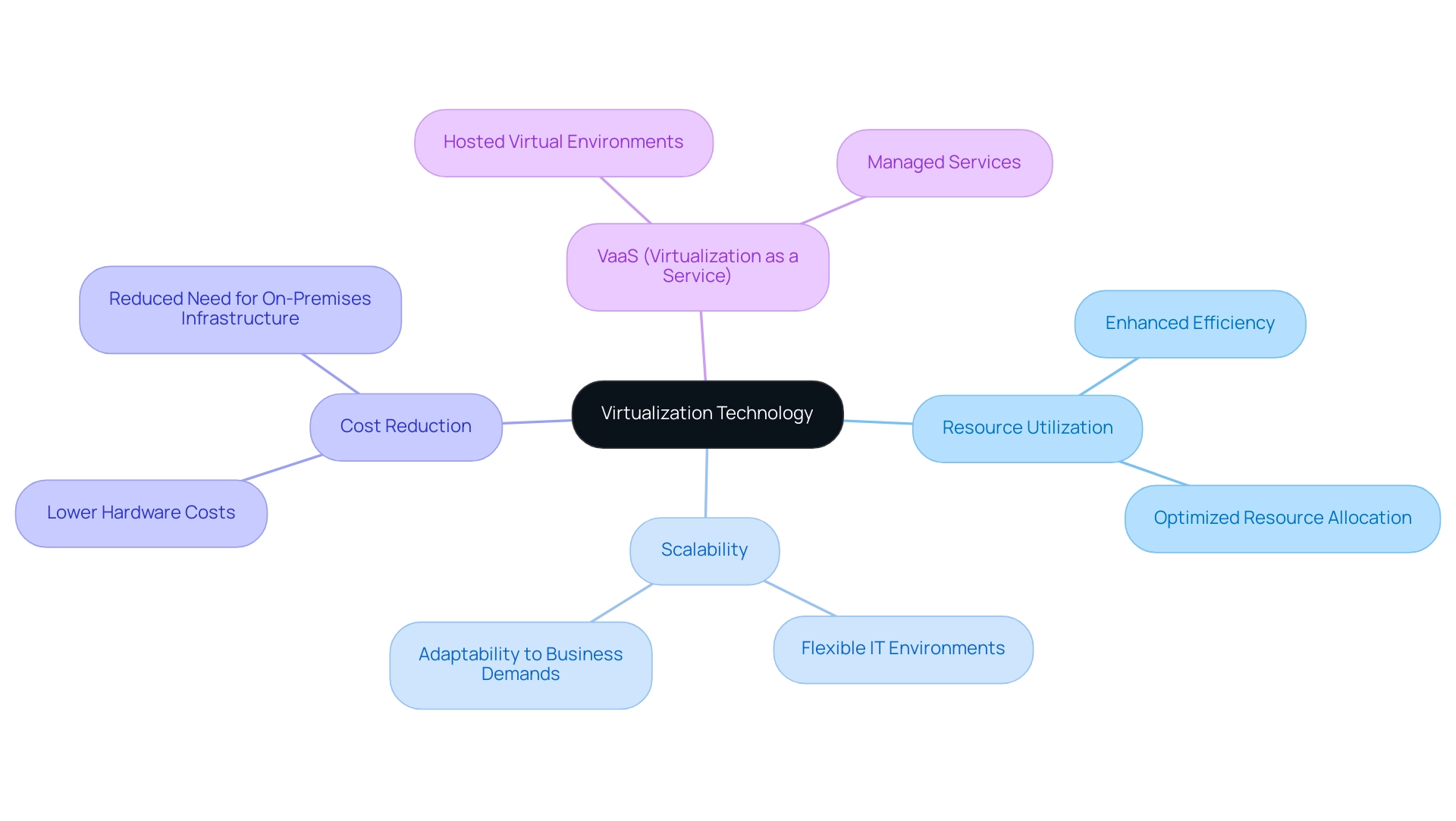
Key Benefits of Implementing Virtualization as a Service
The execution of virtualization as a service offers numerous benefits that go beyond simple expense reductions. A recent survey indicates that three-quarters of senior executives have fully realized their projected savings following virtualization implementation, underscoring its financial viability. The service, utilizing virtualization as a service, significantly decreases hardware expenses and upkeep expenditures, enabling organizations to allocate resources to more strategic initiatives.
This service also simplifies the delivery of Windows applications, reducing both cost and complexity. Furthermore, virtualization as a service enables rapid scaling of IT resources in response to fluctuating demand, thereby enhancing operational flexibility. For instance, the case study on Application Virtualization Trends highlights how application virtualization encapsulates applications from the underlying operating system, allowing them to run in a self-contained environment.
This approach minimizes installation processes, reduces application conflicts, and enhances software portability, with Docker containerizing over 3.5 million applications. Additionally, the service streamlines disaster recovery processes; by utilizing virtualization as a service, virtual environments can be swiftly replicated and restored, effectively minimizing downtime during critical incidents. The enhanced resource distribution and performance improvement linked to virtualization as a service lead to heightened operational efficiency.
As noted by Joshua Orens, Infrastructure Manager at Foundation Software,
It was great working with them and I look forward to continued success with GO-Global.
This sentiment reflects the collaborative spirit that virtualization as a service fosters, as entities leverage this technology to achieve better outcomes. However, it is crucial to address the security aspect; many virtual systems remain unpatched or are patched late, which can inadvertently expose them to vulnerabilities.
By ensuring robust security protocols, organizations can fully capitalize on the benefits of virtualization as a service while safeguarding their operations and further enhancing their operational flexibility and cost savings.
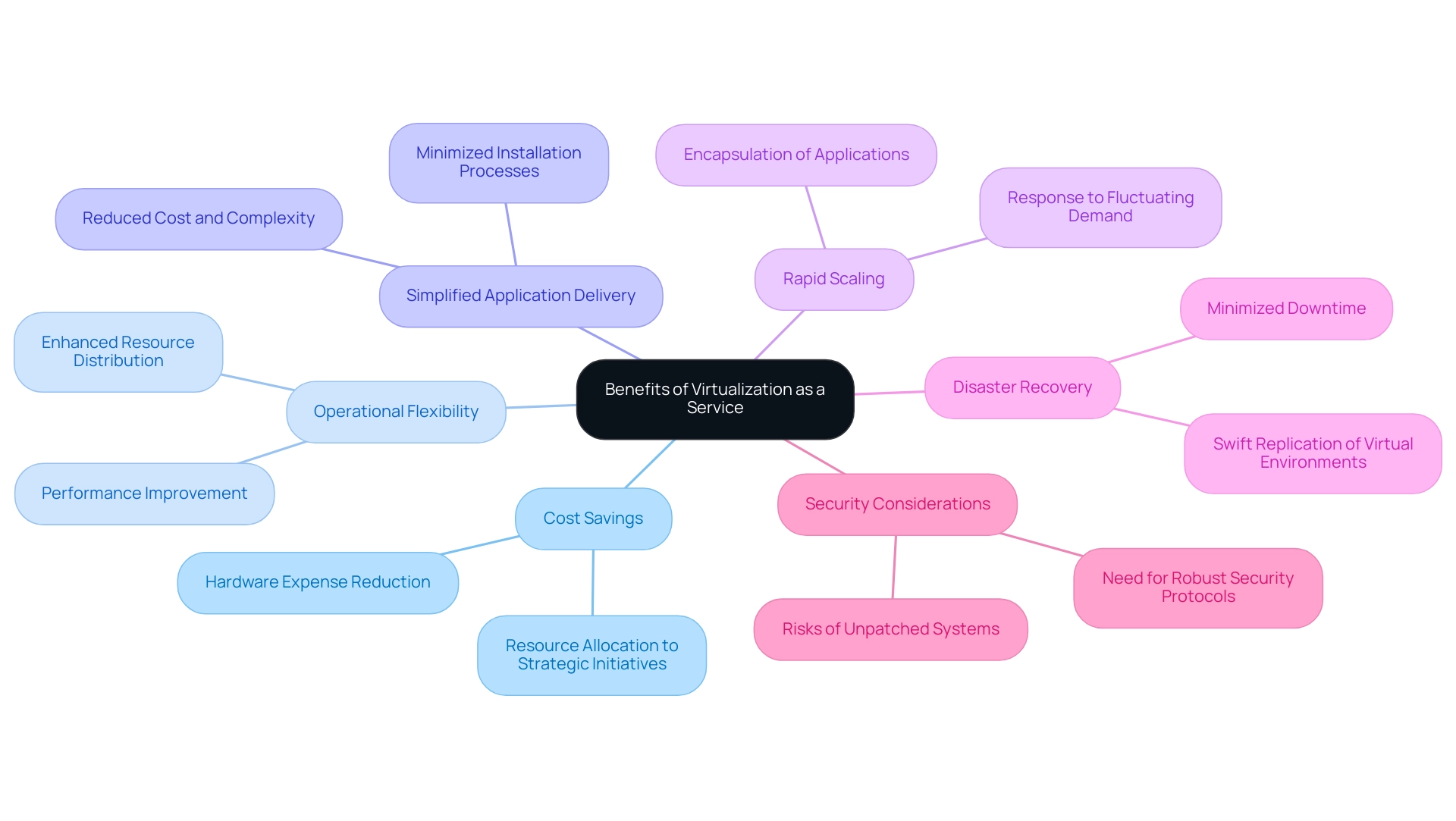
Exploring Different Types of Virtualization for Service Implementation
Organizations today have a variety of options to consider when implementing virtualization as a service. Among these, server emulation stands out, enabling multiple server instances to operate on a single physical server. This approach not only maximizes resource utilization but also enhances operational efficiency.
Meanwhile, desktop emulation has emerged as a pivotal solution for remote work scenarios, allowing users to access their desktop environments from any location, thus supporting Bring Your Own Device (BYOD) strategies. Additionally, application abstraction provides a robust framework for running applications in isolated environments, significantly enhancing compatibility and security measures. As highlighted in recent insights, a major trend in the software market is the advancements made by key players, reflecting the growing importance of these technologies.
With the software market observing these trends, understanding the various types is crucial for CTOs aiming to select a strategy that aligns seamlessly with their business objectives. Additionally, as entities adjust to evolving client demands—such as those observed in warehouse layout designs, which have experienced 2 notable contributions in the past 6 hours—utilizing virtual capabilities becomes crucial for sustaining a competitive advantage. A case study titled 'Adapting to Evolving Warehouse Layouts' illustrates how flexibility and responsiveness in virtualization as a service are key to satisfying client demands.
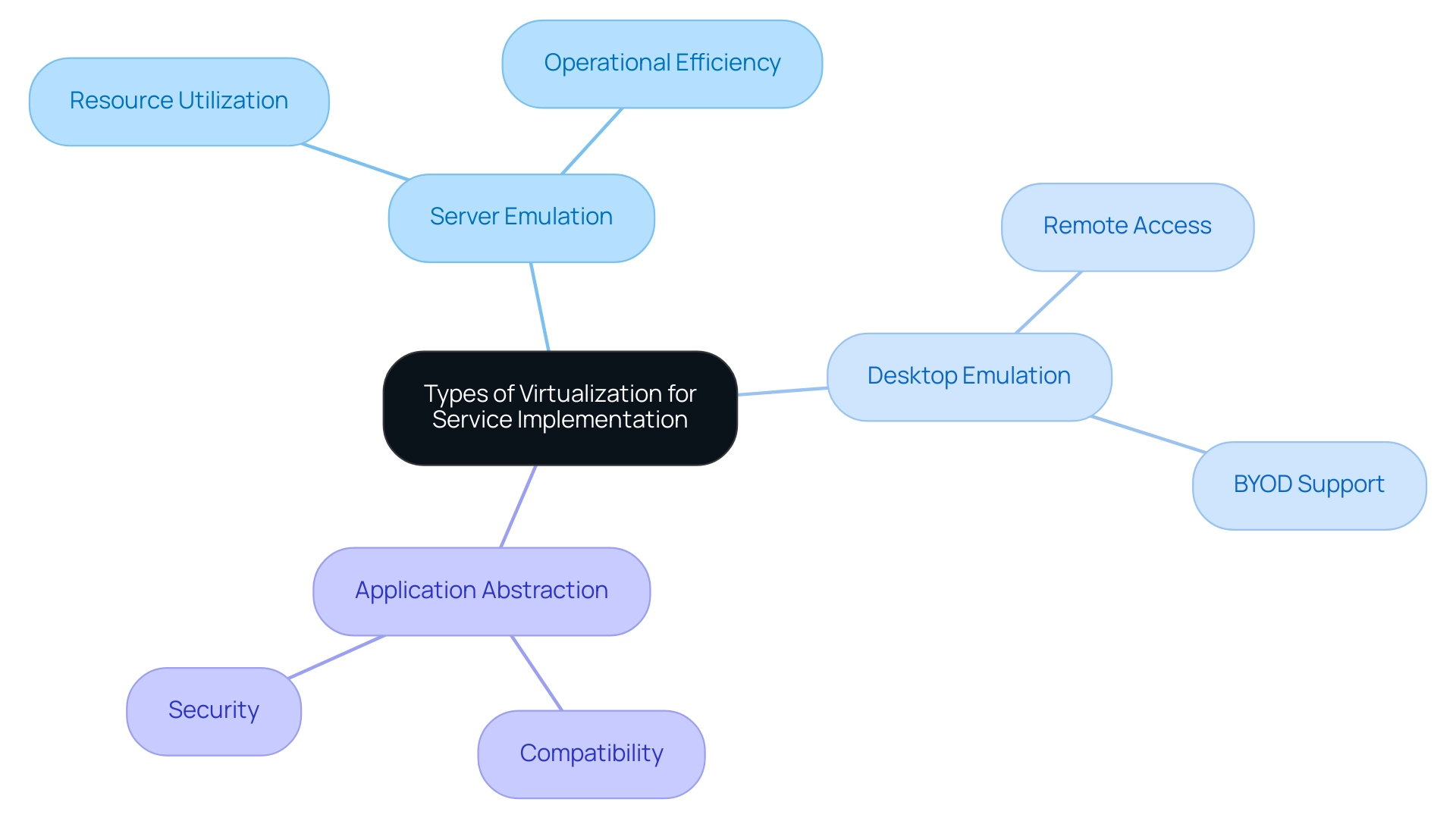
Best Practices for Successful Implementation of Virtualization as a Service
Successful execution of virtualization as a service necessitates entities to begin with a comprehensive needs evaluation to precisely capture their distinct requirements. This foundational step not only clarifies objectives but also establishes critical key performance indicators (KPIs) that serve as benchmarks for measuring success throughout the deployment and operational phases of virtualization as a service. As Jeff Schultz, Vice President of Cisco Cloud + AI Infrastructure, notes, "A comprehensive needs assessment is crucial for aligning technology solutions with business goals, ensuring that entities can effectively leverage virtualization as a service to enhance their cloud capabilities."
Choosing a trustworthy service provider for virtualization as a service is essential; organizations should prioritize vendors with a proven track record and stringent security protocols to safeguard their data. According to Brian Maggiacomo, who has over 25 years of channel experience, selecting a provider with extensive industry knowledge in virtualization as a service can significantly influence the success of value-added services initiatives. Engaging stakeholders from the outset in the context of virtualization as a service fosters collaboration and buy-in, which are crucial for a smooth transition.
For instance, Vincent Trama, Chief Revenue Officer at Presidio, leads a sales team focused on solving complex business challenges through digital solutions, exemplifying the importance of addressing unique organizational needs in the implementation of value-added services. Furthermore, regular training for both IT staff and end-users is vital, ensuring that all users can maximize the benefits of the new virtualization as a service model. To maintain optimal performance and security, continuous monitoring and optimization of the virtual infrastructure, particularly through virtualization as a service, is necessary, enabling entities to adapt to evolving technological landscapes and business needs.
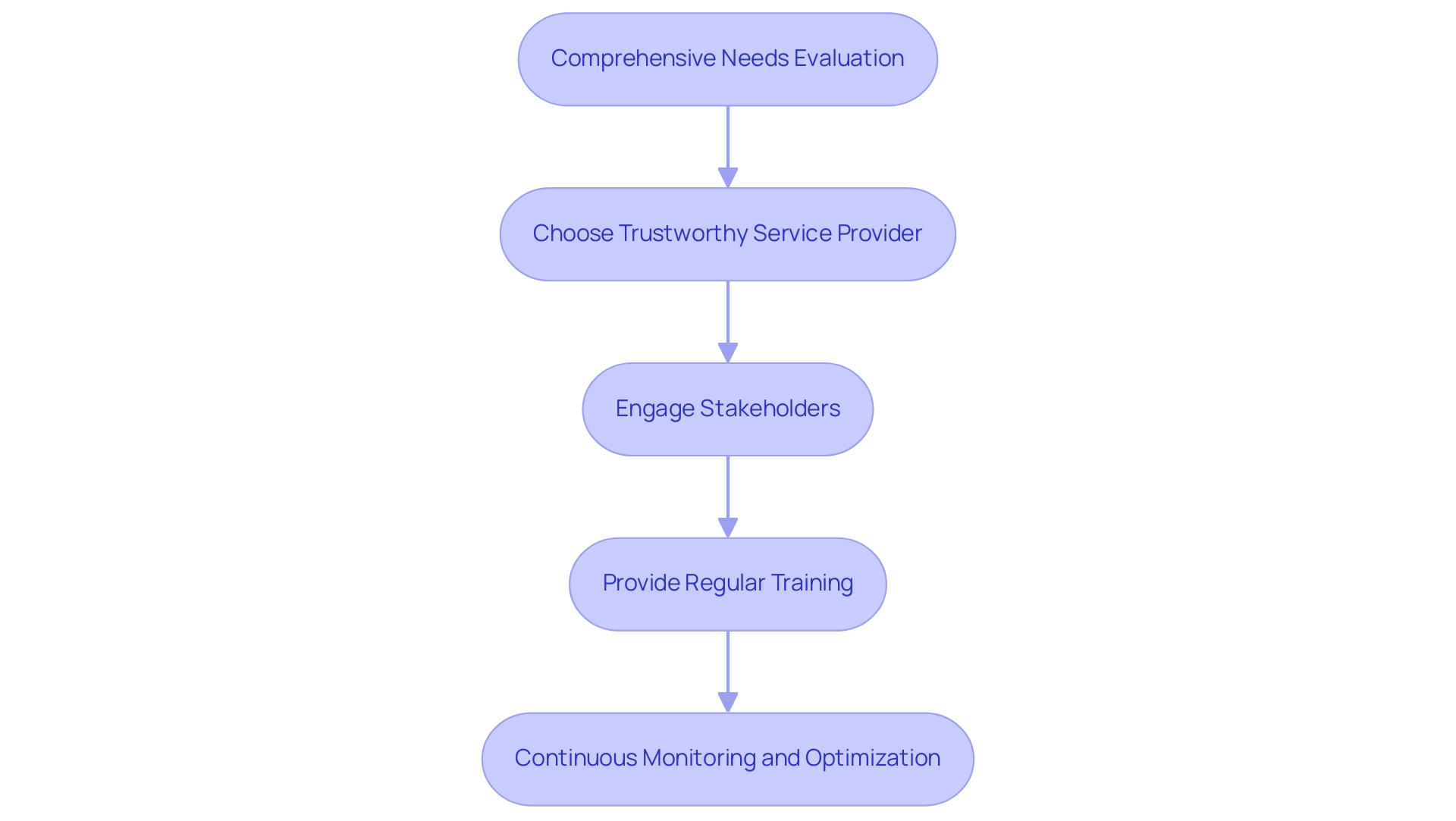
Navigating Challenges in Virtualization Implementation: Solutions and Strategies
Implementing virtualization as a service (VaaS) presents businesses with a range of challenges, including resistance to change, integration difficulties with existing systems, and concerns regarding data security. As noted by Dennis McCafferty, a contributor to CIO Insight:
Three-quarters of senior executives say projections for cost savings after virtualization implementation have been fully realized, and 70 percent say virtualization has had a significant impact on efficiency and cost savings, highlighting the tangible advantages that can encourage entities to overcome these hurdles.
To effectively navigate these challenges, organizations should employ robust change management strategies. This encompasses:
- Clear communication of the advantages of the service to stakeholders
- Extensive training programs aimed at equipping employees with the essential skills and knowledge
- Conducting rigorous testing prior to full deployment to identify and resolve potential integration issues early on
Choosing a vendor that provides robust security measures and possesses relevant compliance certifications can significantly reduce concerns regarding data protection.
Notably, Chenyang Lu's h-index of 50 underscores the importance of research-backed strategies in the field, providing a credible foundation for best practices. Additionally, insights from the case study on Big Data Analytics for Business Intelligence reveal that companies can leverage data collected through social media to better understand the implications of virtualization as a service and identify critical issues for creating value. Ultimately, creating a continuous feedback loop after implementation enables companies to adjust their technology strategies over time, ensuring ongoing enhancement and alignment with business goals.
Moreover, recent developments in virtual machine placement policies, as discussed in the Journal of Network and Computer Applications, further emphasize the evolving landscape of virtualization, making it crucial for organizations to stay abreast of these trends.
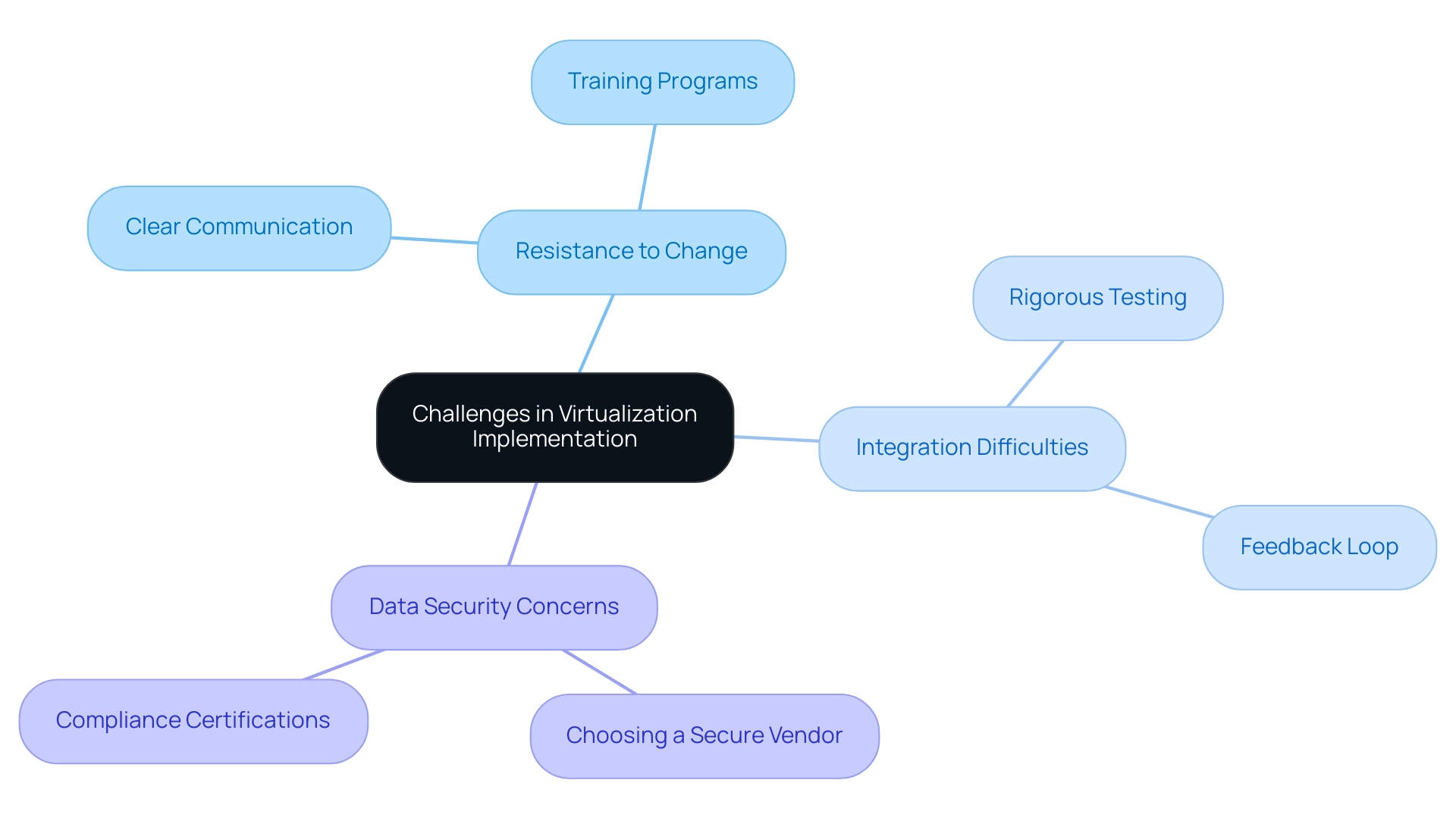
Conclusion
The exploration of Virtualization as a Service (VaaS) reveals its transformative potential in optimizing IT infrastructure. By enabling organizations to run multiple virtual instances on a single physical machine, VaaS enhances resource utilization, scalability, and operational efficiency while significantly reducing costs. The benefits extend beyond financial savings; VaaS simplifies application delivery, facilitates rapid scaling, and streamlines disaster recovery processes, thus positioning itself as a critical component of modern IT strategies.
However, the journey toward successful VaaS implementation is not without its challenges. Organizations must navigate:
- Resistance to change
- Integration complexities
- Security concerns
Employing robust change management strategies and selecting a reputable provider with strong security protocols are essential steps in overcoming these hurdles. Moreover, continuous training and monitoring of the virtual environment ensure that organizations can adapt to evolving technological landscapes and maximize the advantages of VaaS.
In conclusion, as businesses increasingly embrace virtualization trends, understanding the intricacies of VaaS becomes imperative. This technology not only positions organizations for greater operational flexibility and efficiency but also plays a vital role in maintaining a competitive edge in an ever-evolving market. By addressing implementation challenges proactively and leveraging the full spectrum of VaaS benefits, organizations can drive innovation and achieve their strategic objectives.




